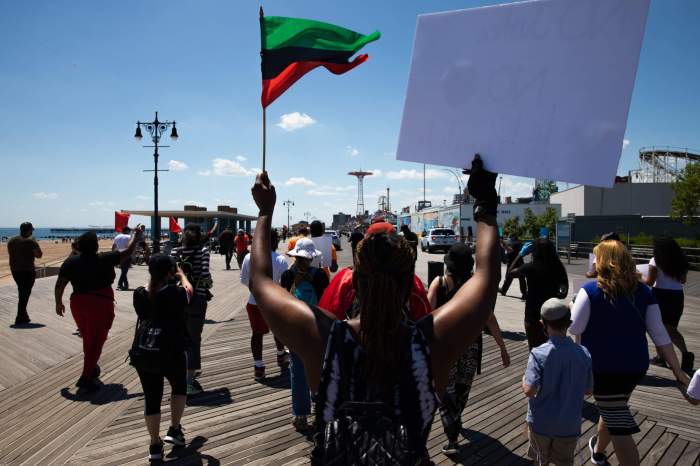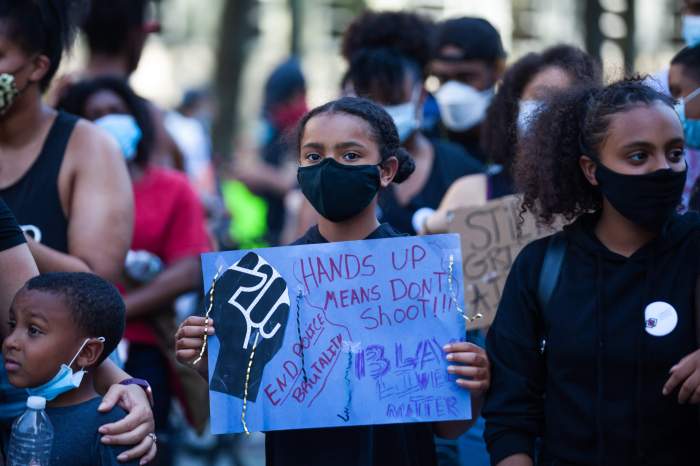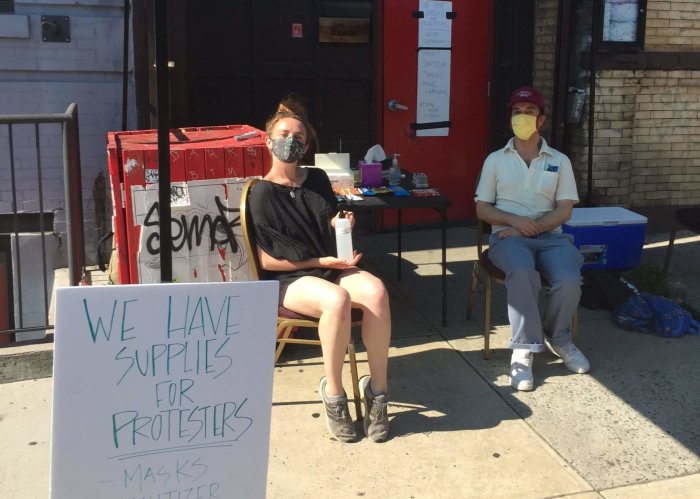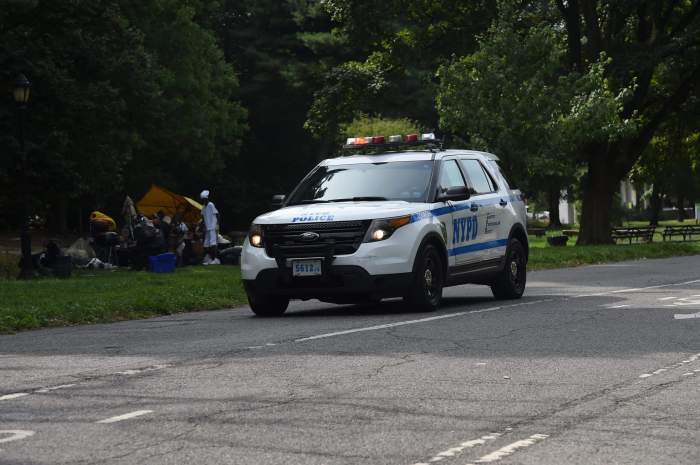Demonstrators gathered on Monday outside the Metropolitan Detention Center in Sunset Park to protest the recent death of a 46-year-old inmate — whose body prison management is allegedly refusing to release.
The large gathering amassed across the street from the Sunset Park jail on Feb. 8 to call for greater transparency surrounding the death of Edwin Segarra, an inmate who loved ones say succumbed to COVID-19 mere days after receiving the vaccine.
Members of Segarra’s family alleged that officials will not respond to requests for further information about his death and will not allow the family to take custody of his body for funeral preparations. To amplify the family’s calls for transparency, the activist organization Black Lives Matter Greater New York helped Segarra’s family organize a rally at the foot of the 12-story high federal building closed to visitors since the onset of the coronavirus pandemic.
Holding megaphones and banners depicting Segarra’s face, the group chanted “No more!” as they faced the imposing prison located at 80 29th St. Hearing the crowd below, inmates could be seen scaling the bars on their windows and heard hammering the glass with their fists. Segarra’s son, Eddie, called out to those held up in the facility, shouting, “I see you; I hear you!”
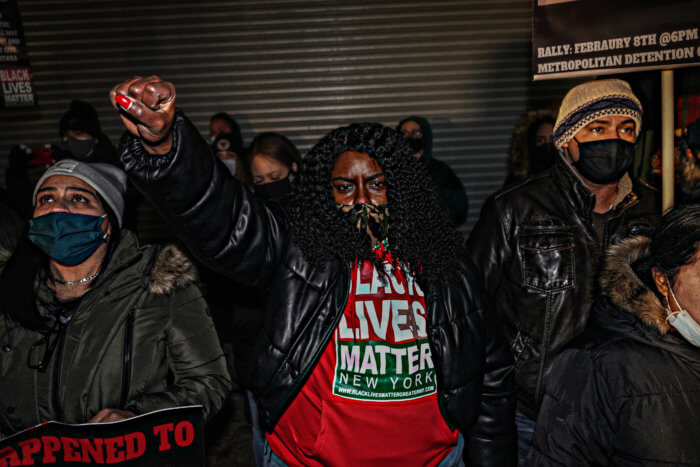
Eddie is grief-stricken by his the death of his father, who had been locked up since 2009 without trial on drug-dealing and robbery charges. Having learned of his dad’s illness through family members, Eddie is now begging for more answers.
“They have a program in there where they can text. He was in contact with my mom and my aunt. He let them know on the 23rd that he caught the virus after taking the vaccine,” Eddie told Brooklyn Paper’s sister publication amNewYork Metro.
Since Segarra suffered from diabetes and high blood pressure, loved ones worried that the vaccine would not be safe for him — and now, citing radio silence from MDC, they fear it may have led to his untimely death.
“I want to know, where are the medical records? I just want to see those documents, his vitals. I want to know they were looked at and it was approved for him to take that dose,” Eddie said. “Without any of that information, we are just left here without any answers. That is the worst you can do — at least give us something.”
Health experts, however, have said that the vaccine is safe for everyone except those allergic to any of the ingredients in the vaccine.
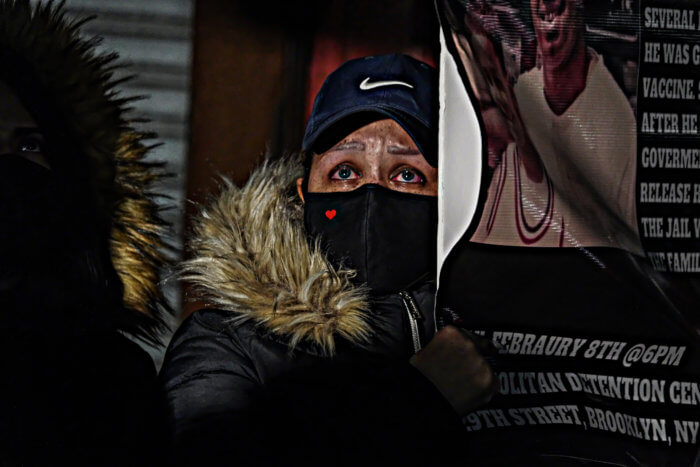
Roughly 40 protesters — lit by the headlights of parked cars — gave speeches and recited chants directed at MDC, where Segarra became sick before being rushed to NYU Langone-Brooklyn on the day of his death.
Protesters called on the new Biden-Harris administration to intervene and provide clarity. Segarra’s family hopes that that through federal action, officials will be forced to release their loved one’s body and explain the details surrounding his death.
“These people need this, they need to know they are not forgotten,” Eddie said, referring to the over 1,500 individuals housed in the facility.
This isn’t the first time protesters have taken the Sunset Park facility to task. In December, dozens gathered to decry conditions inside the facility amid a spike in COVID-19 cases and routine heat and hot water outages.
Last June, against the backdrop of Black Lives Matter protests across the world, protesters called for the release of MDC detainees, citing unsafe conditions and an inability to social distance during the coronavirus pandemic. That same week, 34-year-old Jamel Floyd died after officers pepper-sprayed him in the face.
Neither MDC nor the Department of Corrections immediately responded to a request for comment.
In a statement provided to amNewYork Metro, representatives with the Bureau of Prisons said they have been working with the Centers for Disease Control and Prevention and federal government to distribute inoculations to eligible, imprisoned individuals, administering the drug as it becomes available.
Through this statement, the bureau shared that the vaccine has now been dispatched to more than 100 of BOP’s facilities, including the Metropolitan Detention Center where Segarra contracted the deadly virus. However, reps emphasized that it is not up to them who receives the vaccine.
As of Feb. 10, BOP has received 43,580 vaccination doses and administered 43,544. The bureau’s initial plan offered the vaccine to full-time staff that travel from the facility and into the community, creating what they deemed a higher transmission rate.
“Remaining doses at the locations referenced above were, and will be, provided to inmates based on priority of need in accordance with CDC guidelines, and inmates will continue to receive the vaccine as provided by the COVID-19 Vaccine/Therapeutics Operation,” the statement provided to amNewYork Metro read.
While BOP declined to discuss Segarra’s case specifically due to privacy concerns, they said procedures typically taken when an inmate passes away are circumstantial, and determined at the local level as opposed to by the bureau.
“Each inmate death is handled according to policy and based on the circumstances surrounding the death. Some procedures governing inmate death protocols are determined locally at each institution because of the differences in laws from state to state,” the statement read. “The classification of death is determined by the coroner and not BOP staff. Additionally, notifications are made in a timely fashion. (e.g. agency and departmental staff, family members or next of kin, the U.S. Attorney’s office, the Probation Office, and Consulate for Non-US citizens).”
Update (Feb. 11, 11 am): This story has been updated to include comment from the Bureau of Prisons.
This story first appeared on AMNY.com.

















